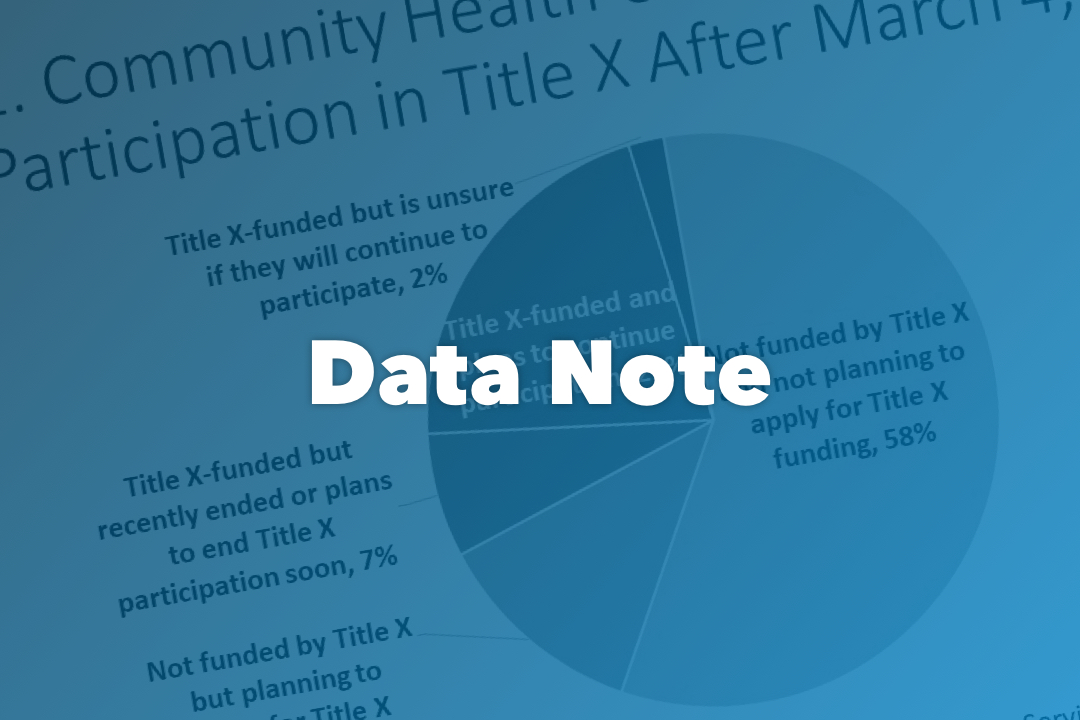Data Note
June 2025
Feygele Jacobs, Kay Johnson, Sara Rosenbaum, Maddie Krips
The Affordable Care Act’s (ACA) insurance reforms for working-age adults and people who need but cannot afford private insurance transformed community health centers (CHCs) beginning with their implementation in 2014. Fueled by the ACA reforms, CHCs have grown in scale, scope and capacity and today serve more than 31 million people in urban, rural and frontier communities across America.
Medicaid expansion, a core feature of the ACA, is now threatened as a result of proposed work requirements and changes to eligibility determination and renewals that are designed to constantly churn working-age adults off their coverage. H.R.1, One Big Beautiful Bill Act, places the entire Medicaid adult expansion population at risk. Research shows that the mandatory work requirements alone could cost nearly 5.6 million CHC patients their coverage.
The failure to renew the generous subsidies for ACA Marketplace coverage, coupled with major new barriers to getting and renewing coverage, will eliminate coverage for millions of people. The Congressional Budget Office estimates that about 16 million more people will be uninsured. Millions are community health center patients. These coverage losses, in turn, will drive steep reductions in health center revenue. Health centers stand to lose tens of billions of dollars in revenue essential to maintaining their core services, with Medicaid work requirements resulting in losses of up to $32 Billion over five years.
The result: community health centers, patients, and communities effectively lose 12 years of progress and return to what they were in 2013, prior to the implementation of the ACA.
Key Findings from the Literature
An extensive body of literature explores the impact of the ACA on health centers and the patients and communities they serve (See Appendix, The Impact of the Affordable Care Act Medicaid Expansions on Community Health Centers (CHCs): A Scan of the Literature).
ACA Medicaid expansion resulted in a fundamental change in community health centers, adding more adult patients and increasing the share of CHC revenues from Medicaid. (Lam & Grasse, 2019; Saloner et al., 2020)
ACA Medicaid expansion increased the share of CHC Medicaid revenues, with CHCs in expansion states having 40% of their total revenue from Medicaid, compared to 25% in non-expansion states. (Jiao et al., 2022)
By 5 years after ACA Medicaid expansion, 40% of adult CHC patients in expansion states were covered by Medicaid, compared to 19% of adult CHC patients in non-expansion states. (Goldstein, 2021)
After ACA Medicaid expansion, CHCs in expansion states had a 40% decrease in uninsured visits, compared to non-expansion states which had a decrease in uninsured CHC visits of only 16%. (Angier et al., 2015)
Medicaid expansion among low-income adults was associated with improved quality of care. (Decker et al.) CHCs in Medicaid expansion states showed improvements in asthma treatment, body mass index screening, and hypertension control. (Cole et al., 2020)
CHCs in rural communities experienced substantial impact from Medicaid expansion. Improvements in quality and increases in patient volume were observed in rural CHCs in expansion states. (Cole et al., 2018)
These findings illustrate the essential role of the ACA Medicaid reforms in transforming CHC care for medically underserved communities by reducing high rates of uninsurance, expanding access to care, and driving improvements in quality.
What does turning the clock back to 2013 look like?
If enacted, as shown in the Exhibit these policy changes would have a dramatic effect on CHCs and those they serve, with health centers reverting to pre-ACA capacity:
CHC sites drop from over 15,600 to barely more than 9,100 (a 41 percent drop).
Staff decline by nearly half, from over 300,000 FTEs to barely more than 150,000.
The number of patients served drops by 10 million – or more than 30 percent – from more than 31 million to 21 million.
The percentage of uninsured CHC patients, 18 percent in 2023, effectively returns to its 2013 level of 35 percent, while the proportion of insured patients drops from 82 percent to 65 percent.
Total annual patient revenue drops from over $48 billion to $16 billion (a decrease of 66 percent or two-thirds) and Medicaid revenue drops from $23 billion to $7.5 billion.
Beyond the immediate impact on vast numbers of patients, the deep cuts and reductions in coverage being considered in Congress pose a dire threat to the stability - and in many cases, the very survival - of community health centers nationally, and a grave danger to health and health care.
Appendix: The Impact of the Affordable Care Act Medicaid Expansions on Community Health Centers (CHCs): A Scan of the Literature
Exhibit: Key Community Health Center Facts from the UDS
Since 2013, primarily as a result of the ACA Medicaid expansion, CHCs have grown in number of sites, staff capacity, number of patients served, and scale of revenue. Between 2013 and 2023, data from UDS show:
While the number of CHC grantees increased by 13%, the number of CHC sites increased by 70%, from 9,170 to 15,665.
- Staff nearly doubled, with the number of FTEs increasing from 156,817 to 300,144.
- The number of patients served increased by more than 40% and patient visits increased by more than 50%.
- The number of patients covered by Medicaid nearly doubled, and the number of Medicaid -insured CHC adult patients 18-64 increased by 125%.
- The number of uninsured patients decreased by 26%.
- Patient revenue (charges) from Medicaid more than tripled, from $7.5 billion to $23.4 billion.



